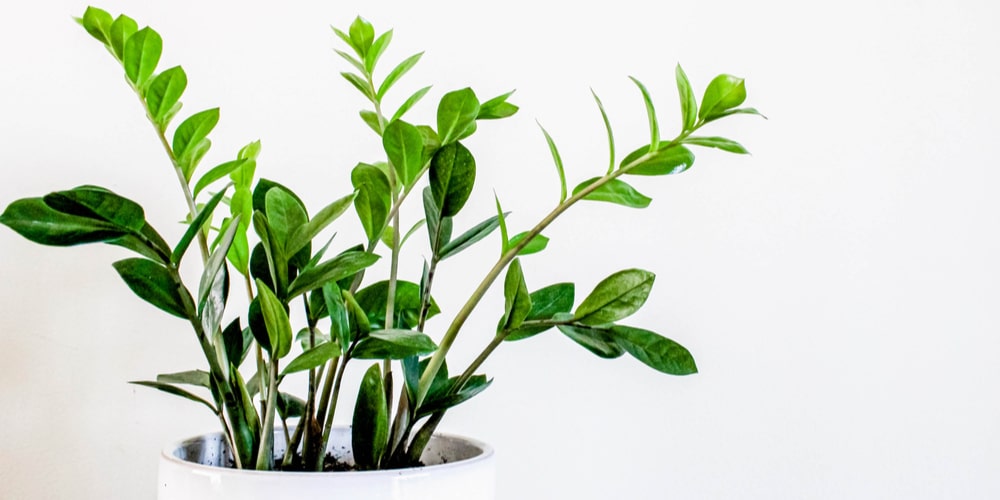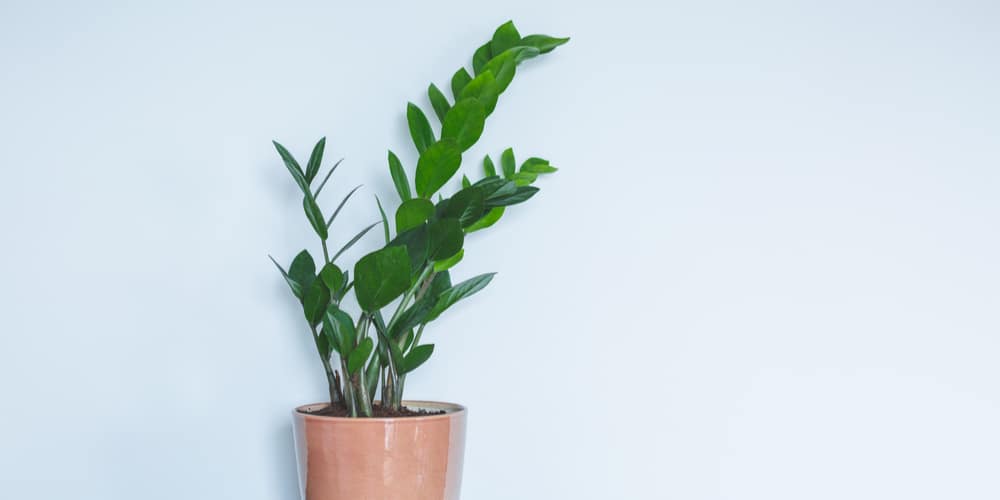Zamioculcas zamiifolia (you may call it ZZ): A popular houseplant that is known for its ease of care. It has actually been branded as the plant that thrives on neglect. That makes it perfect for those who are new to plant ownership or have a busy lifestyle. Taking that into consideration, it’s easy to feel alarmed if you see your ZZ plant’s stalks droop and fall over.
So, what could be causing this, and what can you do about it? Read on to find out.
Reasons why your ZZ plant is drooping

The following are the most common reasons for drooping stalks in ZZ plants:
1. Overwatering
One of the most common reasons for drooping leaves on any plant is overwatering. This is especially true for ZZ plants, as they are very sensitive to too much water.
Overwatering or over misting your ZZ plant leads to root rot, thus your plant will fall over since it’s not receiving important nutrients. If you suspect that root rot has struck your plant, you can try to save it by replanting in fresh, well-draining soil.
When watering your ZZ plant, make sure to feel the soil first. If it is already moist, then you don’t need to water it. Allow the top inch or so of soil to dry out before watering again.
2. Underwatering
Yes, underwatering can also cause your ZZ plant to droop, even though this is less common. Compared to overwatering, the drooping will, this time, be a result of a totally different reason: drought stress.
Drought stress occurs when your plant isn’t receiving enough water and starts to wilt. Luckily, this one is quite easy to fix by simply giving your plant a good drink.
3. Not enough light
ZZ plants need bright-to-moderate, indirect sunlight to grow properly. And while your plant can tolerate low light levels, there is a limit.
If your plant is not receiving enough light, it will start to stretch out as the new growth starts to search for light. In the end, your plant will become leggy, and the stalks will start to droop, ruining the natural aesthetics.
To fix this, move your plant to a spot that receives more light. But make sure to do it gradually, as too much light can also damage your plant. You can also try using grow lights to supplement the existing lighting.
4. Excessive light
Too much light can also cause your ZZ plant to droop. The leaves will start to turn yellow and the stalks will start to lean over as the plant tries to get away from the light. As such, the plant will take on a droopy look.
If this is the case, simply move your plant to a spot with less light. Again, do it gradually to avoid shocking your plant. And if you don’t want to move your plant, consider toning down the light with a sheer curtain or blinds.
5. Fertilizer issues
A majority of ZZ plant owners believe that it’s not necessary to fertilize their plants. However, that’s not entirely true. ZZ plants actually benefit from being fertilized, as it helps them grow faster and produce more leaves.
As such, if you’ve ruled out most of the other potential causes and your plant is still drooping, then it’s likely that a lack of fertilizer is to blame.
That being said, over or under-fertilizing your plant can also cause problems. So, it’s important to find the right balance. You will want to keep the minimum fertilizing period to once every 3-6 months.
6. Low temperatures
While ZZ plants tolerate a wide range of temperatures, they prefer conditions that don’t go below 65°F. As such, exposure to low temperatures of below 45°F can cause your plant to experience stunted growth and cold shock in serious cases.
When such situations occur, your ZZ plant’s stalks will start to droop as the leaves fall off. If this is the case, simply move your plant to a warmer location with bright, indirect light.
7. Transplant stress
As part of good plant care, you will want to transplant your ZZ plants every 2-3 years to give them a fresh start. This helps to promote new growth and prevents the plant from becoming pot-bound. However, transplanting can also cause your plant some stress, which can lead to drooping.
Avoid re-potting during mid to late summer, since the warmer conditions may not be so conducive. Besides, the plant is not actively growing during this time. It’s best to re-pot your plants in the spring or early summer when they are actively growing.
When transplanting, it’s important to handle your plant carefully to avoid damaging the roots. Once transplanted, make sure to water your plant well and give it some time to adjust to its new surroundings.
8. Physical damage
You have young ones or pets in your home, and you simply can’t wrap your head around how your beautiful ZZ plant could have ended up with a bunch of leaves and stalks lying on the floor.
Unfortunately, curious kids and pets are often the culprits behind physical damage to plants. If this is the case, you will need to carefully inspect your plant for any signs of damage.
Should the plant be badly damaged, you may need to cut away the damaged parts and hope that it will be able to recover.
ZZ Plant Falling Over: Final words
As you can see, there are a number of reasons why your ZZ plant may be drooping or have yellow leaves. But don’t worry, as most of these problems can be easily fixed with a little bit of effort on your part.
However, if you can’t seem to figure out the problem or your plant continues to decline, you may have to seek professional help. A qualified plant doctor will be able to diagnose the problem and recommend the best course of action.
